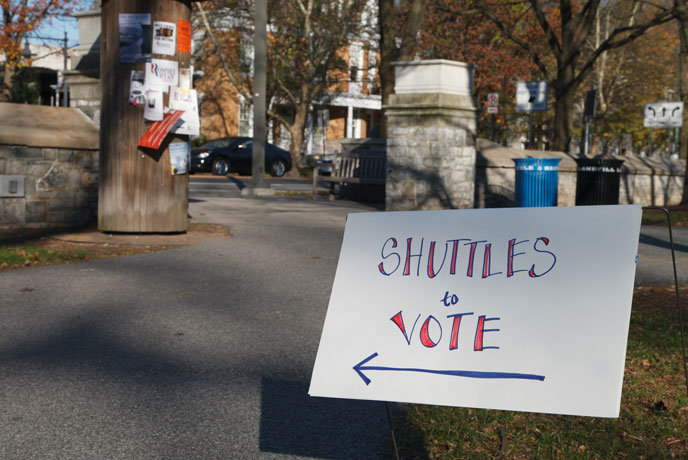Election Reflection

Election Day sign.
How did students prepare? Let us count the ways.
There was no shortage of available information about the two main-party presidential candidates, Barack Obama and Mitt Romney in the weeks and days leading up to the election. But given the tsunami of election news, commentary and advertising that reaches American voters each day, it was sometimes tough to navigate the waters—especially since the finer details of the candidates' platforms often are obfuscated by rhetoric and spin.
How, then, did first-time voters make clear-eyed decisions on Nov. 6?
"It isn't always easy, because the issues are complex," admits Assistant Professor of Political Science and International Studies Andrew Wolff, pointing to subtle differences between the candidates' foreign-affairs policies and marked differences in their foreign-policy leadership styles. "There's also a lot to keep up with. Students are busy with homework and extracurricular activities, and they may not have time to follow the issues very closely."
Luckily, they had a lot of help. Administrators and student leaders worked overtime this fall to help inform students about the issues, the candidates and the mechanics of voting. And while the sense of history-making that electrified the campus and country in the days surrounding the historic inauguration of America's first African-American president couldn't be replicated—that glass ceiling has already been shattered—it's clear that political interest and engagement on campus still runs high in 2012
Learn more about how students have engaged in this year's election:
- **The Home Stretch: Election Day**
- **Students Leading Students**
- **What Students Want to Know**
- **Campaign Strategies: One Class' Journey to Election Day**
- **Election photos**
Voter resources:
- Voting in Cumberland County
- Voting by Absentee Ballot
- Election Protection
- The Pew Center on the States
- Voter eligibility:
Can I Vote?
Overseas Vote Foundation
Published November 3, 2012